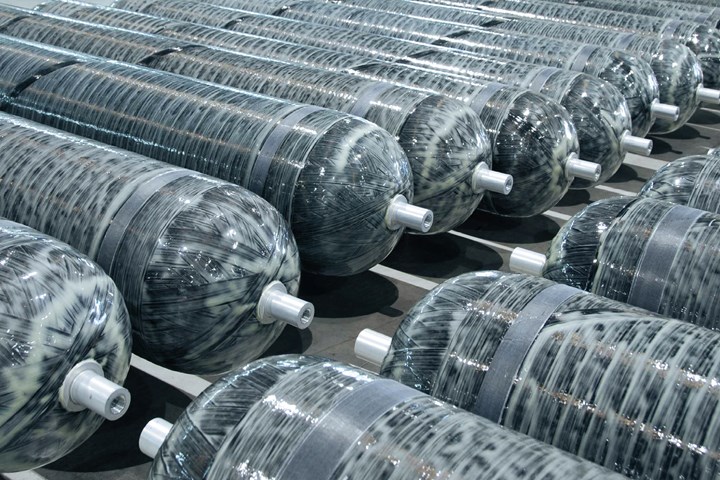Type 4 fuel containers feature a plastic liner encased in a complete outer layer of carbon or mixed fiber construction. The primary role of the liners in Type 4 tanks is to serve as a barrier against permeation, offering no structural support to the container. Despite not being completely gas-tight, the permeation rate has been deemed acceptable for Compressed Natural Gas (CNG) use. These cylinders find application in weight-sensitive scenarios, notably in buses, trucks, and original equipment manufacturer (OEM) vehicles like the Honda Civic. Notable suppliers of Type 4 containers include Quantum, Ullit, Lincoln Composites, and Ragasco.

- Construction: Type 4 cylinders are made of various materials, including plastic bags and outer packaging. The outer packaging provides a strong design, while the plastic liner acts as an oil barrier.
- Composite Materials: Composite packaging for Type 4 cylinders is generally made of carbon fiber reinforced polymer (CFRP) or similar materials. This material has a high strength-to-weight ratio, making the roller deep and durable.
- Weight: Type 4 cylinders are known for their design. The use of composite materials leads to higher weight compared to other types of cylinders such as Type 1 or Type 2.
- Pressure rating: CNG Type 4 cylinders are designed to meet specific pressure levels, which can vary depending on the manufacturer and application. Pressure rating is an important factor to consider when selecting a cylinder for a particular application.
- PESO Authorised , ISO 9001 : 2015 Certified .
Sulphur and phosphorus in the cast analysis of material used for the manufacture of gas cylinders .



